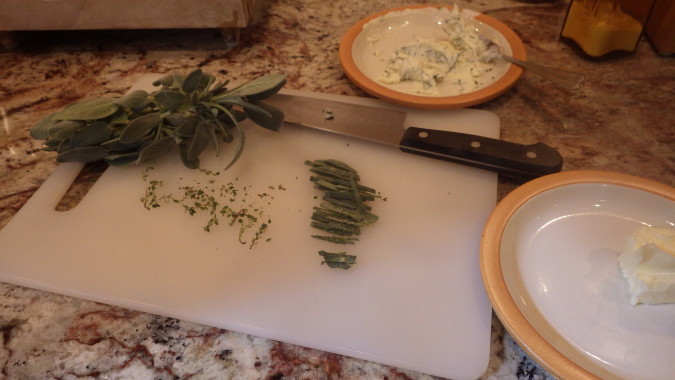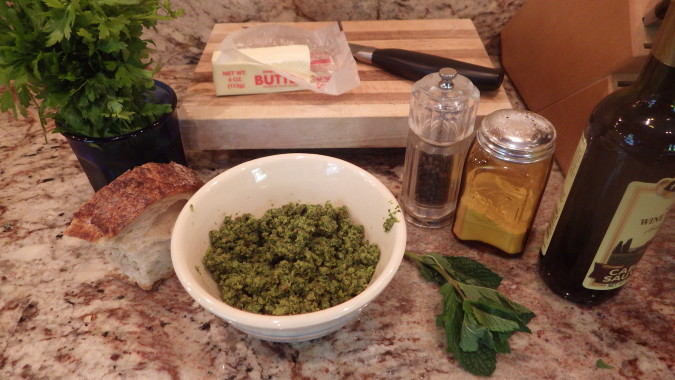The centerpieces of this feast were the Fish with Green Sauce and the Roasted Fowl Two Ways. Thanksgiving wouldn’t be Thanksgiving without the turkey, and a 9th Century Feast wouldn’t be a 9th Century Feast without some bird or beast in the middle of the table. Just having these items back then would have been a huge deal. Most people ate a barley porridge called browis (which I’ll talk about tomorrow) three times a day.
This was a rich man’s feast; we were ready to go nab some crowns from the party store just for the occasion.
The reason the fowl is roasted two ways is because of the herbs available in both Kilton in Wessex, and Tyrsborg on Gotland (for the uninitiated Gotland is Sweden’s largest island), the places highlighted in Octavia’s saga. Rosemary, brought to the British Isles by the Romans, was available in Kilton, and sage and thyme would have been available in Tyrsborg. But my real interest in roasting these birds was in using the glaze and basting sauce made from red wine vinegar, water, and, God help me, more honey.
Herbs and butter were combined and nestled deep between the skin and the breast meat. The vinegar and honey mixture was dribbled in there as well, and also in the cavity and on the exterior of the birds. They were then salted and peppered and roasted, making an appearance out of the oven once for a good basting.
Click on image to view full size
It is not easy trying to infuse flavor into poultry. Brining works well, but the flavor is more salty than herby. Butter and herbs under the skin do give that top layer great flavor, but to truly taste the flavor of the basting sauce and the herbs the skin needs to be eaten. This beautifully colored skin was delicious, and the red wine vinegar baste made the kitchen smell heavenly.
The green sauce for the fish was a bit of a surprise. I have no issue using a good knife, and can mince with the best of ‘em. But to make a pesto-like sauce from bunches of parsley, mint and dill by chopping them and then muddling them in a mortar and pestle when I could toss them into my Cuisinart seemed like a less than reasonable use of my time. Especially on a day when ten dishes were heading to the table. This sauce also called for crumbled toasted bread, vinegar, and butter. My poor mortar and pestle would never have been the same.
Click on image to view full size
At first taste I wasn’t sure what to make of the green sauce itself. I roasted the fish, haddock in this case, and spooned the sauce over the top. The presentation was lovely. The reviews from my tasters were all positive. I read the recipes aloud as we tasted each dish. Most said they were prepared not to like it, based on the strong flavors in it. But with a meal as weighty as this one, with many courses, some heavy textures, and complex flavors the green sauce provided a bright note, a sharp green flavor to counteract the rest of the meal. It was perfect as part of the feast and all the tasters complimented it.
This makes me wonder if the cook who got sick of cleaning out her mortar and pestle invented salad.
Tomorrow – The Grains and Vegetables. Start a betting pool on whether either of them requires honey.
Get the complete Cookery Book(let) here at octavia.net












How we’d love to have a picture of you in those crowns from the Party Store…- you surely all deserved them! Well, next time. Wonderful photos – as always.